Which Computer Monitor is best for you? A Buying Guide for 2014
Looking to upgrade your Computer Monitor to a vibrant LCD display? Our comprehensive buying guide will help you choose the right Computer Monitor.
If you are an archeologist or like collecting old technology by all means keep that huge CRT display that is hogging half your desk. Maybe you are true old school and have a green or orange phosphor display hanging around somewhere. However the latest generations of thin, lightweight, high resolution displays are cost effective offerings that now in many cases rival high quality televisions. As an added bonus they are much more energy efficient so they cost much less to operate. To take an in-depth look at the huge range of offerings you can drop into the Adorama Computer Monitor Department, but if you want a few things clear up regarding all of the features, read on!
Let’s break it down for you.
Before you choose an LCD monitor, consider what you’ll be doing with it. For simple surfing, e-mail, and everyday tasks, a low-end monitor will do just fine. If you’re looking for something that doubles as a home entertainment screen for gaming or watching high-definition (HD) movies, you may want to look for a more robust feature set. Finally, if you’re into photography, graphic design, or video production, look to a professional-grade monitor for extensive control and the highest possible image quality.
Computer Monitors Features You Should Account For
Screen Size
The first thing to consider is size. Monitors are measured diagonally, starting at about 19 inches for basic desktop models and going up to 46 inches for wall-mounted presentation screens. Desktop monitors max out at 30 inches, but make sure you have enough room for one of the bigger models. Ideally, you should be sitting three feet (roughly arm’s length) from your monitor. If your desk is too shallow to permit this distance, stick to a smaller model.
Aspect Ratio
Monitors come in two shapes, or aspect ratios. The 4:3 and 5:4 ratios that comply with the older standard are roughly the same shape as traditional televisions and are slightly wider than they are tall. Newer widescreen monitors feature 16:9 or 16:10 ratios, like HD televisions, and are much wider than they are tall. Widescreen monitors are better for watching movies, viewing more documents simultaneously or several open windows at a time. However, 4:3 ratio monitors require less vertical scrolling when you’re working with a single document or window.
Resolution
A monitor creates images using thousands of tiny dots called pixels. Its resolution is the number of pixels it can display, and is measured as width × height. The higher the resolution, the more can fit on the screen, but individual elements (such as text, icons, and images) will be smaller. Most monitors have multiple resolutions you can choose according to your specific needs. However, the number of physical pixels or native resolution stays the same, and image quality may suffer when you set higher or lower ratios. When choosing a 4:3 ratio monitor, select a native resolution of at least 1280 × 1084. If you’re looking for a widescreen monitor to display true HD video, choose a native resolution of 1920 × 1080.
Response Time
Response time refers to how quickly a monitor can display moving images, and is crucial when choosing a monitor for HD video and gaming. The lower a monitor’s response time, the faster it can redraw the contents of the screen. This leads to smoother video with less motion blur, smoother transitions, and fewer visible artifacts such as jaggies. Choose a monitor with a response time of 8 milliseconds (ms) or less. Today’s monitors feature response times as low as 1 or 2 ms, which are often targeted at gamers.
Contrast Ratio
The contrast ratio is the difference between the brightest white and the darkest black. It determines the richness of colors displayed. Choose a contrast ratio of 400:1 or better; otherwise, on-screen colors may look dull, and your monitor may suffer from poor image detail in dark areas. Adequate contrast is especially important if you’re working with graphics or video.
Viewing Angle
The viewing angle is expressed in degrees, and determines how well you can see a screen when you move from side to side or above and below it. Choose a viewing angle of 160° or more, especially if you’ll be using your monitor to make presentations or for home entertainment purposes.
Inputs and Outputs
Choose a monitor with DVI (digital) and VGA (analog) inputs even if your current computer only has VGA outputs. This way, you won’t have to buy another monitor if you purchase a new system or graphics card. If you’re planning to use your monitor with other electronic peripherals such as gaming consoles, HD cable boxes, personal video recorders (PVRs), Blu-ray players, and still or video cameras, make sure it also has a High-definition Multimedia Input (HDMI) port.
If you’re using a current Mac or certain high-end graphics cards, you may need a monitor with a DisplayPort input. Although it is possible to connect the DisplayPort output on your computer to a VGA or DVI input on a monitor with the proper adapter, you cannot connect VGA or DVI outputs to DisplayPort inputs. Nice-to-have options include built-in speakers and audio inputs, webcams, USB ports, and memory card slots
High-Quality LCD Computer Monitors To Consider
With the above advice in mind, here are three representative computer monitors. Be sure to visit the Adorama Computer Monitor Department at Adorama for the best deals on monitors.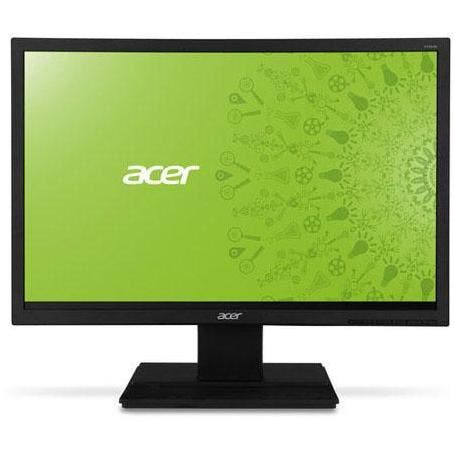
Acer V196HL 18.5” LED MonitorAdoramaprice: $89.99For the college student and budget buyers a good display also needs to not eat a hole in their pocket, and at the same time buyers are always looking for display space to run all of the apps that a person needs to stay in touch and be productive. A good place to start when shopping for value is the Acer V196HQ that provides an 18.5-inch display for your dollar. This excellent display features 1366 x 768 resolution and is designed to have very fast, 5 ms, refresh rate so that if a user gets tired of viewing schoolwork it also is a good second TV with crisp clear images and no blurry images during fast action scenes. The base provides the ability to pivot the screen and so it can be used in both landscape and portrait modes.
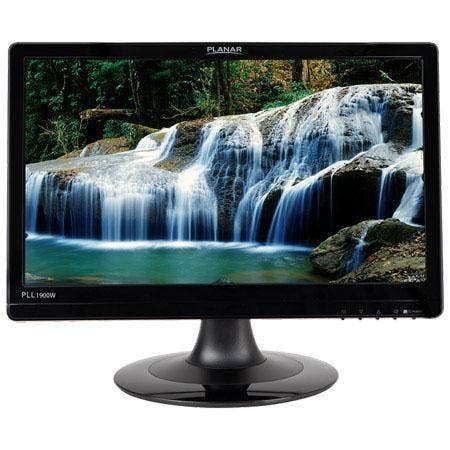 Planar PLL1900W 19” Widescreen LED LCD MonitorAdorama price: $115.00
Planar PLL1900W 19” Widescreen LED LCD MonitorAdorama price: $115.00
The Planar PLL1900W provides users a big screen experience without a big payout. The LED LCD display has a 16:9 aspect ratio and a 1366 x 768 resolution. It has one VGA input and is designed to be compatible with both Macs and Windows computers, providing flexibility when ordering for an office. It provides a 5 ms response time and comes with integrated TrueMedia speakers.
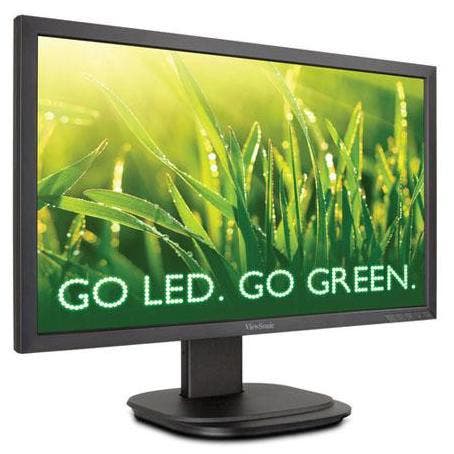
ViewSonic VG2239M-TAA Adoramaprice: $269.99
Business users often have two screens, and yet a display such as the ViewSonic VG2239M-TAA($269.99) could eliminate that need by allowing the equivalent of two full pages on a single screen, saving desk space without sacrificing productivity.
The 22-inch display has a 1920 x 1080 resolution, and with its LED technology it provides solid energy savings as well, using as little as 50% of what some alternatives offer. It is compatible with both PCs and Macintosh computers so it provides flexibility in the office.
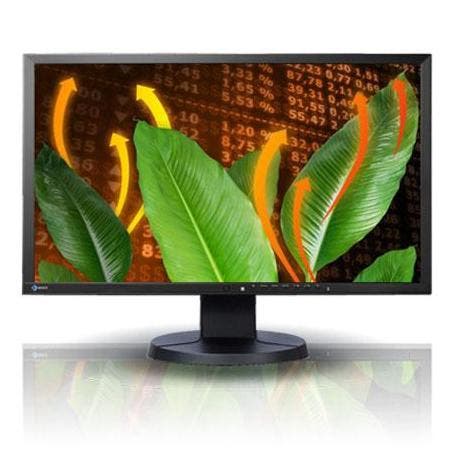
Eizo FlexScan EV2336WFS 23”Adorama price: 356.99
The 23-inch Eizo FlexScan EV2336WFS 23” 1080p Widescreen LED display uses LCD technology for a picture that is as bring and as clear as on a high-end television, supporting 1920 x 1080 resolution of flicker free viewing. With its in-plane switching (IPS) panel it provides a 178 degree of viewing so that you do not need to be centered on the display for clear viewing.
The display was built with both ergonomic needs and is eco-friendly. It has an adjustable stand for height and tilt to meet users requirements and has what is called paper mode that helps reduce eye train. It meets various low energy program requirements such as the EPA Energy Star and Ecosense.
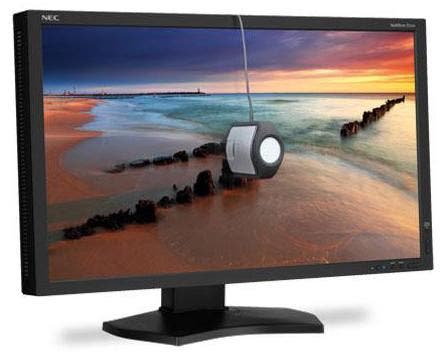
NEC MultiSync P232WAdorama price: $819.00
Professionals in video and image editing need large displays to help with their work. However, simply a larger display is only part of the equation, and a full set of features tailored to the tasks such as those included in the 23-inch NEC MultiSync P232Ware important as well. The 1920 x 1080 high-resolution LCD display includes a high contrast rate and supports full High Definition 1080p images. Its AmbiBright ambient light sensor automatically adjusts the display’s brightness based on lighting conditions. A key feature that will entice graphics professionals is its MultiProfiler software that enables complete control over the five picture modes, including the loading of any ICC profile directly into the monitor for optimal color space matching. It can serve as a USB hub and includes DisplayPort and DVI-D, HDMI and VGA inputs.
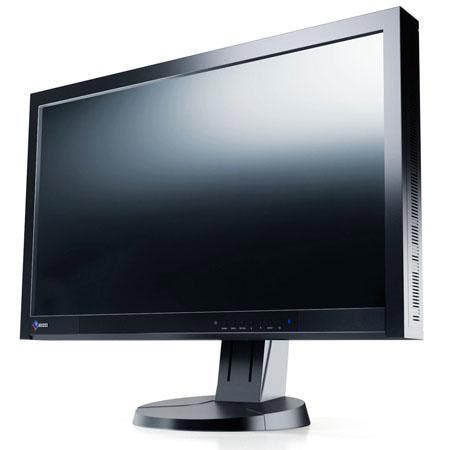
Eizo CX270-BK 27” Coloredge TFT-LCD MonitorAdorama price: $2,004.00
Business and graphic professionals often need their systems for large exacting work, and also for display aid work to a large exacting audience. That is exactly who Eizo is targeting the CX270-BK, a 27” display that has a native 2560 x 1440 resolution, or to put it in context, significantly higher resolution that a top end HD television! It uses a company developed ASIC for high end color processing and since it is designed to be used by graphics professionals there is a multitude on inputs including DisplayPort, HDMI and DVI-D inputs for connecting to various types of graphics boards, The HDMI input also offers direct connection with digital cameras. There is also an optional software package, ColorNavigator, for simple color calibration.
Visit the Adorama Computer Monitors department for great deals!



